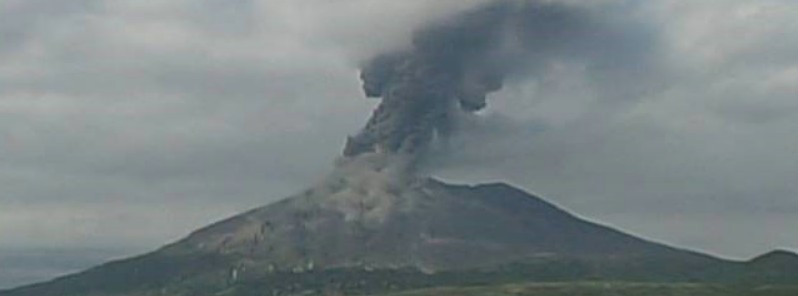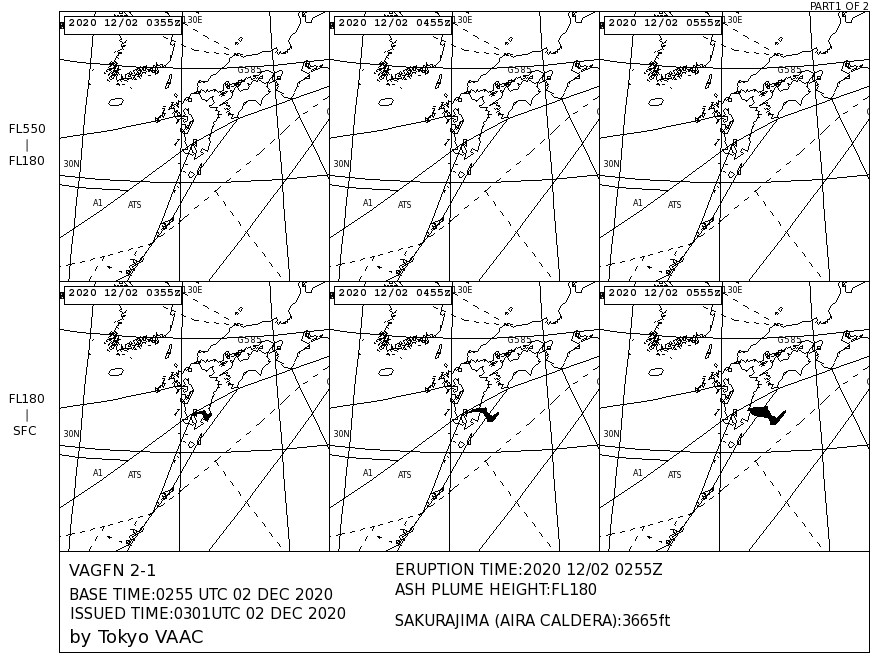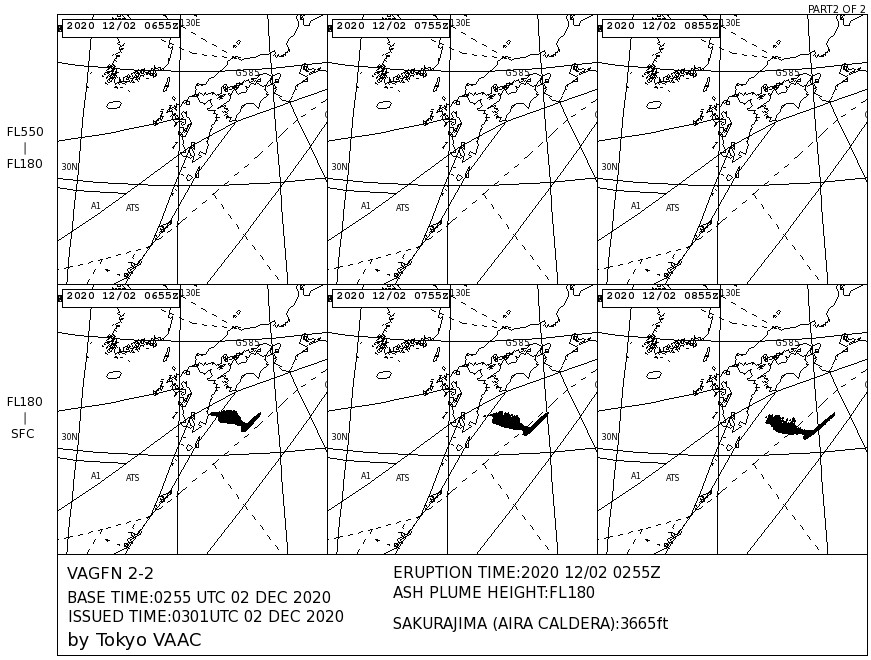Strong explosion at Sakurajima volcano, Japan

After a few months of low-level activity, a strong explosion took place at Japan's Sakurajima volcano at 02:55 UTC on December 2, 2020.
Part of the eruptive column was obscured by a meteorological cloud, making height estimate difficult.
Finally saw some activity at #Sakurajima #volcano after a few months of passive emissions! Too bad southerly winds always bring heavy cloud cover. pic.twitter.com/0xnZmjaAll
— AlexPoulidis (@MeteoVolcanica) December 2, 2020





Sakurajima's Volcanic Alert Level remains at 3 (do not approach the volcano) since February 5, 2016.
On July 1, 2020, a panel organized by the Japan Meteorological Agency warned Sakurajima may erupt on a larger scale sometime in the future.
The frequency of eruptions at Minamidake summit crater has been on the decrease, while the volume of volcanic ashes remains constant– indicating that the upcoming eruption may be bigger than usual, JMA said.
In addition, the panel noted that the bloating and lifting of the mountain, as well as crustal movement, have been observed on the volcano since September 2019.
Geological summary
The Aira caldera in the northern half of Kagoshima Bay contains the post-caldera Sakurajima volcano, one of Japan's most active. Eruption of the voluminous Ito pyroclastic flow accompanied formation of the 17 x 23 km (10.5 x 14.3 miles) caldera about 22 000 years ago. The smaller Wakamiko caldera was formed during the early Holocene in the NE corner of the Aira caldera, along with several post-caldera cones.
The construction of Sakurajima began about 13 000 years ago on the southern rim of Aira caldera and built an island that was finally joined to the Osumi Peninsula during the major explosive and effusive eruption of 1914. Activity at the Kitadake summit cone ended about 4 850 years ago, after which eruptions took place at Minamidake.
Frequent historical eruptions, recorded since the 8th century, have deposited ash on Kagoshima, one of Kyushu's largest cities, located across Kagoshima Bay only 8 km (5 miles) from the summit. The largest historical eruption took place during 1471-76. (GVP)
Featured image credit: JMA

Commenting rules and guidelines
We value the thoughts and opinions of our readers and welcome healthy discussions on our website. In order to maintain a respectful and positive community, we ask that all commenters follow these rules.